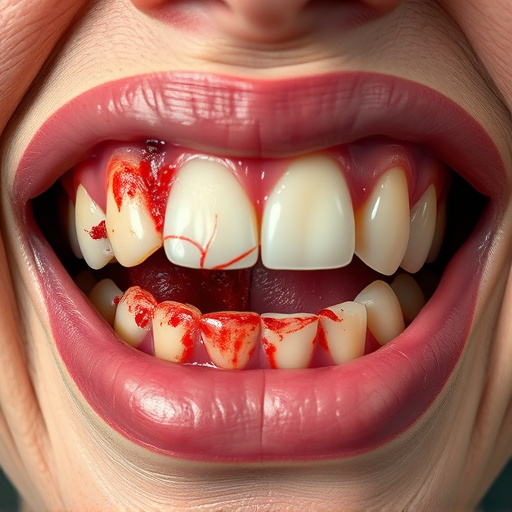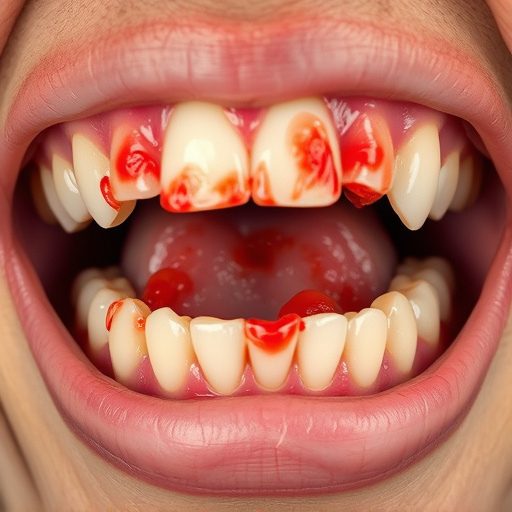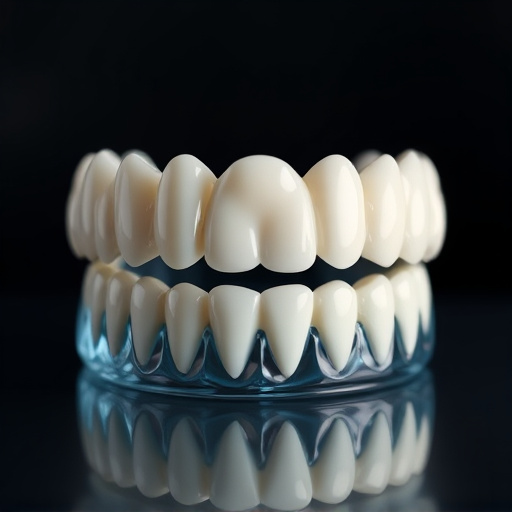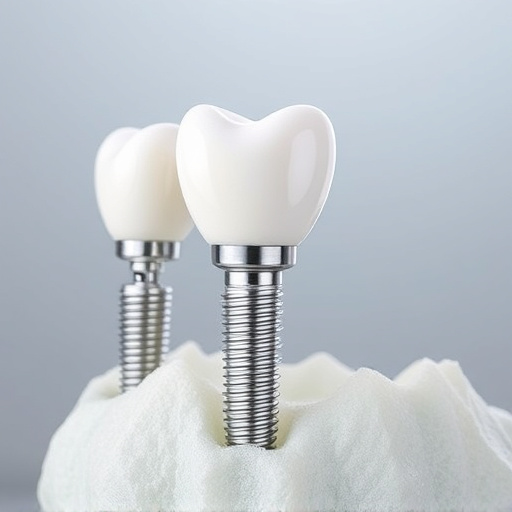Bleeding gums signal potential dental problems like plaque buildup or gum disease, marked by red/purple gums, tender areas, and bad breath. Early detection through oral exams is key. Persistent symptoms may lead to scaling and root planing, a non-surgical procedure removing plaque, tartar, and bacteria below the gumline to heal tissue and reduce inflammation, crucial for preventing gum deterioration and tooth loss, especially for dental implant candidates, optimizing oral health, and saving costs over time.
Do your gums bleed frequently? It could be a sign of gum disease, affecting millions. Explore a powerful solution: scaling and root planing. This deep cleaning method removes plaque and tartar buildup below the gumline, addressing the root cause of inflammation. By eliminating bacterial infections, scaling and root planing promotes healing, reduces bleeding, and prevents further damage. Discover why this non-invasive treatment is a top choice for achieving healthy gums.
- Understanding Bleeding Gums: Causes and Symptoms
- What is Scaling and Root Planing?
- The Benefits of Choosing This Treatment Method
Understanding Bleeding Gums: Causes and Symptoms

Bleeding gums are a common dental issue that many people face at some point in their lives. It’s important to understand that bleeding gums are often a symptom of an underlying problem, rather than a condition in itself. The most prevalent causes include plaque buildup and gum disease. Plaque is a film of bacteria that constantly forms on our teeth, and when it isn’t removed through proper brushing and flossing, it can harden into tartar, irritating the gums and leading to inflammation.
Symptoms of bleeding gums may include bright red or purple gums, bleeding while brushing or flossing, tender gums, receding gums, or bad breath. If you notice any of these signs, it’s crucial to consult a dentist who might recommend scaling and root planing as a tooth repair solution. This non-surgical procedure involves the removal of plaque and tartar buildup below the gumline, smoothing the tooth roots to promote healing and reduce inflammation. Regular oral exams are also essential in detecting early signs of gum disease so that appropriate treatment can be initiated promptly.
What is Scaling and Root Planing?

Scaling and root planing are advanced dental procedures designed to address severe gum disease. It involves a deep cleaning that goes beyond the surface of the teeth to remove plaque, tartar, and bacteria from below the gumline, where they can cause damage but often go unnoticed. This process includes scaling, which removes hardened plaque and tartar from the tooth surfaces and root planing, which smooths and cleans the roots of teeth to promote healthy gum attachment.
Often recommended by family dentistry or restorative dentistry professionals, scaling and root planing is crucial for preventing further gum deterioration and potential tooth loss. It’s a non-surgical procedure that can significantly improve oral health, reduce inflammation, and restore overall oral well-being, making it an essential step in comprehensive teeth cleaning regimens.
The Benefits of Choosing This Treatment Method

Scaling and root planing is a highly effective treatment method for addressing gum disease, a common yet serious dental issue. This non-invasive procedure offers numerous benefits, making it a preferred choice in general dentistry. By meticulously removing plaque and tartar buildup both above and below the gumline, scaling and root planing helps to reduce inflammation, promote healing, and prevent further damage to gum tissue and teeth roots.
This treatment method is especially crucial for patients considering dental implants in the future. Maintaining healthy gums is essential for successful implant placement and long-term stability. Routine oral exams that include scaling and root planing can help catch potential issues early on, ensuring optimal oral health and saving time and money in the long run.
Bleeding gums can be a painful and concerning issue, but with the right treatment like scaling and root planing, you can achieve lasting relief. This non-invasive procedure effectively removes plaque buildup and tartar along the gumline, reducing inflammation and preventing further damage to the gums and teeth. By choosing scaling and root planing, you’re not just addressing the symptoms but also tackling the root cause of your gum problem, ensuring better oral health in the long term.














